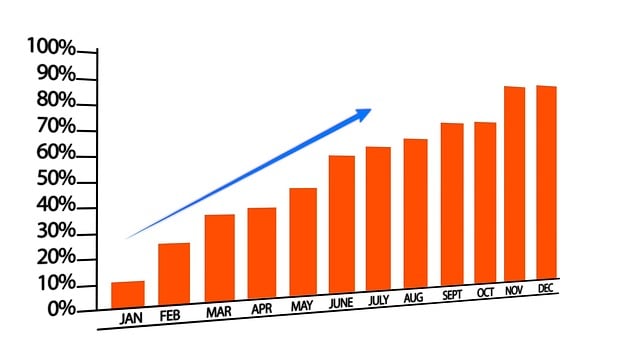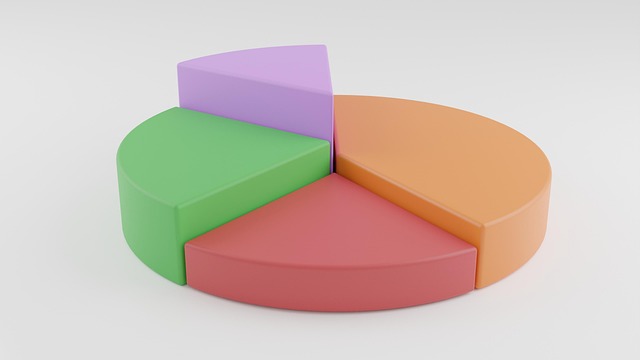TradingView Charts Explained: An In-Depth Guide for Modern Traders
Author: Jameson Richman Expert
Published On: 2025-08-29
Prepared by Jameson Richman and our team of experts with over a decade of experience in cryptocurrency and digital asset analysis. Learn more about us.
In the rapidly evolving landscape of financial markets, the capability to interpret and leverage TradingView charts effectively has transitioned from a mere advantage to an essential skill for traders and investors aiming for consistent profitability. Over the years, my journey through various markets—stocks, cryptocurrencies, forex—has underscored that mastering these charts involves much more than recognizing basic patterns; it demands a comprehensive understanding of market psychology, technical indicators, and cutting-edge charting techniques. As of 2025, with extensive experience and ongoing technological advancements, I can attest that TradingView’s expansive suite of analytical tools is indispensable for crafting disciplined, data-driven trading strategies. This in-depth guide aims to demystify TradingView charts, providing not only foundational knowledge but also advanced insights, strategic applications, and actionable tips for traders of all levels.

What Are TradingView Charts? An Essential Overview
TradingView charts are sophisticated visual representations of price movements across a broad spectrum of financial assets—cryptocurrencies, stocks, forex pairs, commodities, and more. Built on an intuitive, user-friendly platform, these charts form the backbone of technical analysis, synthesizing vast amounts of historical and real-time data into clear, actionable visual formats. From my early days in trading, I learned that interpreting these charts involves decoding market sentiment, recognizing early signs of trend reversals, and forecasting future price movements through diverse analytical lenses. TradingView facilitates real-time data streaming, enabling traders to react swiftly to emerging opportunities. Moreover, its collaborative environment fosters idea sharing, which often leads to richer market insights and validation of trading hypotheses.
Beyond basic charting, TradingView integrates social features—such as idea sharing, community annotations, and discussion forums—that enhance collective intelligence. This environment allows traders to learn from each other’s analysis and adapt strategies based on collective market sentiment. The platform also offers cloud-based storage for your customized layouts and settings, ensuring seamless workflow continuity across devices. These features make TradingView not just a charting tool but a comprehensive trading ecosystem aligned with the needs of modern, connected traders.
Types of Charts and Their Strategic Uses
Over the years, I experimented with various chart types, each serving specific analytical and strategic purposes. Candlestick charts, for example, became my preferred choice because of their rich informational content—each candlestick encapsulates four vital data points: open, high, low, and close prices within a specified timeframe. Recognizing candlestick patterns—such as doji, hammer, engulfing, and shooting star—enabled me to anticipate potential reversals or confirm ongoing trends with higher confidence, especially when corroborated by volume and indicator signals. Candlestick patterns are particularly useful in short-term trading, where psychological market sentiment—fear, greed, indecision—becomes visually evident.
Line charts, while more straightforward, provided a clean overview of long-term directional bias, particularly useful for macro analysis or when clarity is paramount. They strip down complexity, focusing solely on closing prices, which helps in identifying profound trends without distraction. Bar charts, akin to candlesticks but with different visual cues, offered a middle ground—combining detailed price data with simplicity. Choosing the appropriate chart type hinges on your trading horizon—intraday, swing, or position trading—and the specific insights you seek. For instance, day traders benefit from candlestick charts with short timeframes, while swing traders might prefer daily or weekly bar or candlestick charts for a broader perspective.
Furthermore, understanding the nuances of each chart type allows traders to adapt their strategies dynamically. Candlestick charts excel at capturing short-term price psychology, making them ideal for day trading and scalping. Conversely, line charts serve well in identifying broader market trends during macroeconomic analysis. Bar charts, which present price information in a format similar to candlesticks but with added details like volume, can be particularly useful when analyzing multiple assets or when a trader prefers a less cluttered visual environment. The key is to select the chart type that aligns with your trading style and provides clarity without overwhelming your decision-making process.
Leveraging Technical Indicators and Advanced Tools
TradingView’s arsenal of technical indicators is arguably its most powerful feature, enabling multi-layered analyses. I often employed Moving Averages (MA), RSI, MACD, Bollinger Bands, Fibonacci retracements, and Ichimoku Clouds—each serving distinct analytical functions. For example, Moving Averages help identify trend directions by smoothing out price data and providing dynamic support/resistance levels. RSI detects overbought or oversold conditions, signaling potential reversals or continuation points, especially when combined with candlestick patterns. MACD provides insights into momentum shifts and divergence patterns, which can preempt trend changes. Bollinger Bands reveal volatility regimes—crucial during breakout scenarios or periods of consolidation—while Fibonacci retracements/extensions help identify key reversal zones and target levels.
During the 2025 crypto boom, combining these indicators was instrumental in fine-tuning my entry and exit points, preventing false signals that are common in volatile markets. The key is selecting a coherent set of indicators that complement each other—overloading with too many can cause analysis paralysis. Advanced traders often personalize indicator parameters—like setting RSI thresholds or modifying MA periods—to better align with specific asset behaviors and current market conditions, a flexibility fully supported by TradingView. For example, adjusting the RSI overbought/oversold levels from 70/30 to 80/20 can help filter out minor fluctuations and focus on significant reversals, especially in trending markets.
Moreover, combining multiple indicators enhances signal confirmation. For instance, a bullish divergence in MACD, coupled with RSI moving out of oversold territory, can increase confidence in a potential reversal signal. TradingView’s platform allows for scripting and creating custom indicator combinations via Pine Script, empowering traders to develop proprietary analysis tools tailored to their unique strategies. The ability to backtest these custom setups against historical data ensures their robustness before risking real capital.

Drawing Tools and Pattern Recognition
Mastering the drawing tools on TradingView is fundamental for identifying pivotal support and resistance levels, drawing trend lines, channels, and chart patterns. From my experience, accurate pattern recognition significantly enhances timing and risk management. Drawing symmetrical triangles, head-and-shoulders, or pennants with precision—especially when volume and indicator confirmations are present—provides reliable entry and exit points. For instance, correctly identifying a breakout from a descending triangle, combined with increased volume and bullish indicator signals, can lead to high-probability trades.
Fibonacci retracements and extensions are invaluable for projecting potential reversal zones and price targets, particularly during breakouts or pullbacks. The platform’s robust customization options—such as color schemes, line styles, and timeframes—aid in creating clear, personalized setups that facilitate quick decision-making under pressure. For example, overlaying Fibonacci levels with trend lines and volume profiles can reveal confluence zones where multiple signals align, increasing the probability of success.
Over time, I have found that integrating pattern recognition with indicator confirmation creates a high-probability trade framework, reducing emotional biases and increasing consistency. Using the drawing tools to outline channels or flag breakouts visually, combined with volume spikes and indicator shifts, provides a comprehensive picture of market dynamics. This holistic approach supports more confident entries and exits, especially during volatile conditions where quick decision-making is essential.
Developing and Testing Trading Strategies
In the initial stages of my trading career, manual backtesting—meticulously analyzing historical charts—was the cornerstone of strategy development. Today, TradingView’s Pine Script language revolutionizes this process, allowing traders to create, test, and automate custom trading algorithms efficiently. By 2025, I integrated these automated strategies into my workflow, rigorously testing them across various market conditions to ensure robustness and adaptability.
Developing disciplined strategies involves establishing precise rules—such as specific chart pattern triggers, indicator thresholds, and risk management protocols—and strictly adhering to them. Combining technical signals with fundamental insights increases trade quality, as exemplified during the 2025 rally where disciplined timing minimized losses and maximized gains. The process includes defining clear entry and exit criteria, setting stop-loss and take-profit levels based on volatility and support/resistance zones, and continually refining these rules based on ongoing performance analysis.
The power of backtesting with Pine Script lies in its ability to simulate trades over historical data rapidly, allowing for scenario analysis and performance metrics evaluation. I recommend building modular scripts that can be easily adapted or expanded, ensuring your strategy evolves with changing market conditions. This proactive approach minimizes emotional decision-making and promotes consistent execution of your trading plan.
Seamless Integration with Crypto and Trading Platforms
One of the most transformative features in my trading arsenal has been the seamless integration of TradingView with major trading platforms like Binance, MEXC, Bitget, and Bybit. These APIs enable executing trades directly from TradingView’s interface, drastically reducing latency and eliminating the need to juggle multiple platforms during volatile market moments. For example, Binance’s API allows for rapid order placement, dynamic stop-loss adjustments, and real-time position management—all within a unified workspace, which is critical during high-stakes scenarios.
During periods of heightened volatility in 2025, this streamlined workflow allowed me to capitalize on breakout signals, react swiftly to trend reversals, and manage risk efficiently. The ability to execute predefined strategies automatically through TradingView’s alerts and API connections significantly enhances trading precision, especially in high-frequency trading or scalping environments. Setting up these integrations requires careful configuration—ensuring API keys are secure, rate limits are respected, and order parameters are accurately defined to prevent slippage or execution errors.
Furthermore, these integrations foster a synchronized approach—where analysis, decision-making, and execution occur seamlessly—reducing human errors and emotional decision-making. Robust risk controls, such as setting maximum order sizes and implementing alert-based triggers, are essential to maintain discipline and safeguard capital during automated trading.

Common Pitfalls and Proven Risk Management Techniques
Despite my extensive experience, I’ve observed recurring pitfalls—overtrading, neglecting the placement of stop-losses, and emotional decision-making—that can erode profits and threaten capital. TradingView’s charts, while sophisticated, can sometimes lead to analysis paralysis if overanalyzed or overcomplicated. To counter these pitfalls, I adopted strict risk management strategies: setting predefined stop-loss and take-profit levels based on volatility and support/resistance zones, limiting position sizes relative to account capital, and maintaining strict discipline to avoid impulsive trades.
Patience—waiting for high-probability setups—and emotional resilience are fundamental. The maxim “trade what you see, not what you wish to see” remains my guiding principle. Using techniques such as the 1-2-3 risk management rule, trailing stops, and diversification helps safeguard capital against unpredictable market swings. Moreover, maintaining a detailed trading journal—documenting reasoning, emotions, and outcomes—further enhances discipline and learning over time. Regular review sessions—weekly or monthly—help identify behavioral biases or recurring mistakes, guiding continuous improvement.
Future Outlook: Innovations and Continuous Learning
Looking ahead into 2025 and beyond, my experience suggests that TradingView will continue to embed advanced features—such as AI-powered pattern recognition, machine learning-driven predictive analytics, and deeper customization options—making analysis even more precise and user-friendly. Nonetheless, core skills—reading chart patterns, understanding indicator signals, and maintaining a disciplined approach—will remain paramount. Staying adaptable and embracing new tools without neglecting foundational principles is key to long-term success.
Continuous learning, experimentation, and adaptation to technological innovations are essential for sustained success. I recommend traders start with mastering basic tools, then gradually incorporate more complex features as confidence and expertise grow. As markets evolve, so must your skills; TradingView’s evolving platform will be your trusted partner in this journey, helping you to stay ahead of market trends and refine your strategies dynamically.
Engaging with community analyses, attending webinars, and researching trading psychology are invaluable for holistic development. Remember, technology is an enabler, but discipline, emotional control, and continuous education form the core pillars of a resilient trader’s mindset.
Resources for Advanced Traders
To deepen your mastery of TradingView and enhance your trading effectiveness, explore these additional platforms and educational resources:
- Binance — Leading crypto exchange with comprehensive API trading capabilities and a vast liquidity pool, ideal for executing automated strategies and institutional-grade trading.
- MEXC — Versatile platform supporting spot trading, derivatives, and staking, with robust API integration and advanced order types suitable for quant strategies.
- Bitget — Renowned for futures, options, and social trading features, with seamless TradingView integration facilitating rapid execution and community-driven signals.
- Bybit — High-leverage crypto trading platform, offering copy trading, innovative derivatives, and advanced charting tools integrated directly within TradingView for sophisticated analysis and order execution.
By leveraging these resources, continually refining your approach, and staying abreast of technological innovations, you'll elevate your trading game—maximizing the full potential of TradingView’s powerful charting and analysis capabilities well into the future.